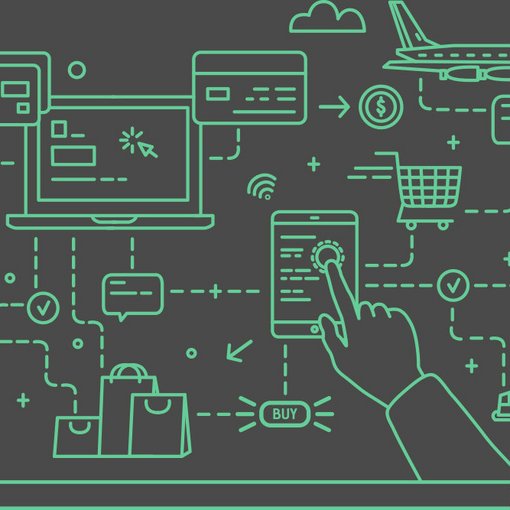
- Four minutes read
Embracing disruption in digital payments
The possibilities of digitisation have only just begun to be realised
I sometimes feel like a mountain climber who has gone one-third up and imagines, with anticipation, the spectacular views to be seen from the peak. Certainly, a lot has been accomplished since the onset of the internet and search engines that ‘freed’ information, bringing incredible disruption to news, directory, travel and many other industries. Then came the beginnings of e-commerce, with the huge latent demand of merchants wanting to sell online, and even consumers wanting to auction their garage junk and find easy ways to collect from buyers, all on the web. Next, in what used to be called "Web 2.0", came the revolution of user-generated content: from rating hotels and doctors, to posting blogs and comments and displaying our personal and professional lives in the social media explosion. Add the layer of mobility and connected devices to the mix and we now have seven billion mobile phones, five billion of which are network enabled.
Competing in a connected world
But this is still pale in comparison to the tens of billions of network connected devices that the internet of things (IoT) will bring, creating a new level of closeness. For example, allowing us to order food and cleaning supplies by clicking a standalone physical button or launching an app. Better yet, with intelligent contracts, consumers may enable IoT devices to place their own orders for milk or dishwashing liquid when supplies run low. Digital disruption created opportunities for winners and it also created disintermediation and pain for those caught in the flux. Many, particularly those at the bleeding edge of change on both sides, were caught off guard by just how much change could occur in such a short space of time.
Making life simpler with Paysafe
At Paysafe, we embrace the future of digital payments and see a tremendous amount of opportunity in delivering services that make life simpler for consumers and merchants. It helps that most of the things we do in life involve a payment consideration, making payments one of the world’s largest industries. It also helps that digital payments play a central role in the business models of virtually all new-economy companies, such as Uber and Airbnb, which are revolutionising entire industries.
Payments is like an onion, with moving funds from A to B at the core, and then surrounded by layer upon layer of added value, convenience, safety, speed, global coverage, mobile enablement, risk management, analytics, compliance and, of course, all delivered in a cost-effective manner. To continue to enhance our technological and market leadership, these are some areas of focus:
- Continuing to build an advanced data platform that provides insights/analytics on consumer behaviour, allowing merchants to achieve mass personalisation of their services, providing relevant offers, loyalty rewards and making consumers feel appreciated and valued; basically using technology to recreate the feeling of customers being served in a differentiated fashion by the store owner.
- Real-time decision-making for risk management, reducing the incidence of fraud, as well as false positives that would otherwise result in a degraded customer experience and revenue loss for the merchants.
- Establishing an entire mobile ecosystem that enables consumers to order with maximum convenience from their phones for pick-up or delivery, and merchants to manage this channel, create segmented promotions and increase the number of orders and the average revenue per order, as well as increasing stickiness/loyalty.
- Continued globalisation of services, covering more countries and territories, currencies and languages, and supporting a growing number of in-market and in-industry alternative payment methods.
- Expanded P2P/remittances corridors and options, so that sending money from NYC to Singapore (or from anywhere to anywhere) becomes as simple as sending an email.
- Increased consumer alternatives, from e-cash vouchers to pay-after-deliver and online credit solutions, supplementing our digital wallets and straight payment processing solutions to give even more control to the end-user.
Consumers come first
The common thread between all these areas is that they put the consumer in the driver’s seat. Consumers are at the heart of any value chain, which also makes merchants happy, thus achieving the proverbial win-win situation. These developments are also bringing digital payments within the reach of more people, driving financial inclusion in underserved communities, as highlighted in a recent G20 report. I’ll conclude with a quote that I heard a few weeks back from Terry Jones, founder of Travelocity: “If you don’t like change, you’re going to like irrelevance even less.” To remain competitive, innovative and at the forefront of progress, players in the payments space must continue to embrace change and fulfil the promise and the potential of digital payments to simplify and enrich the consumer experience, in every market vertical served.




